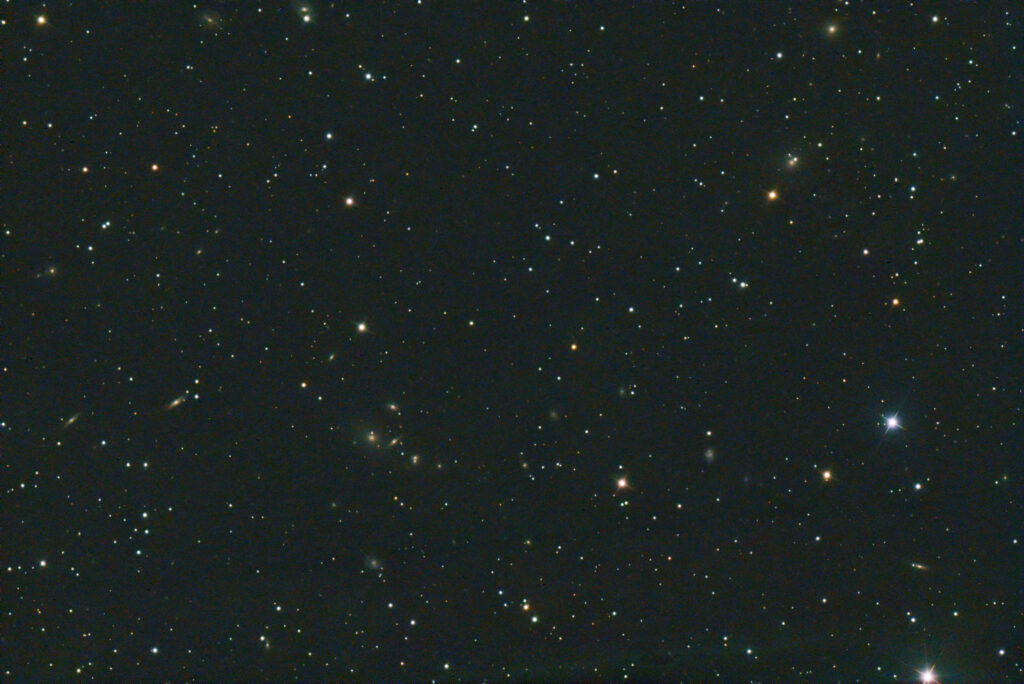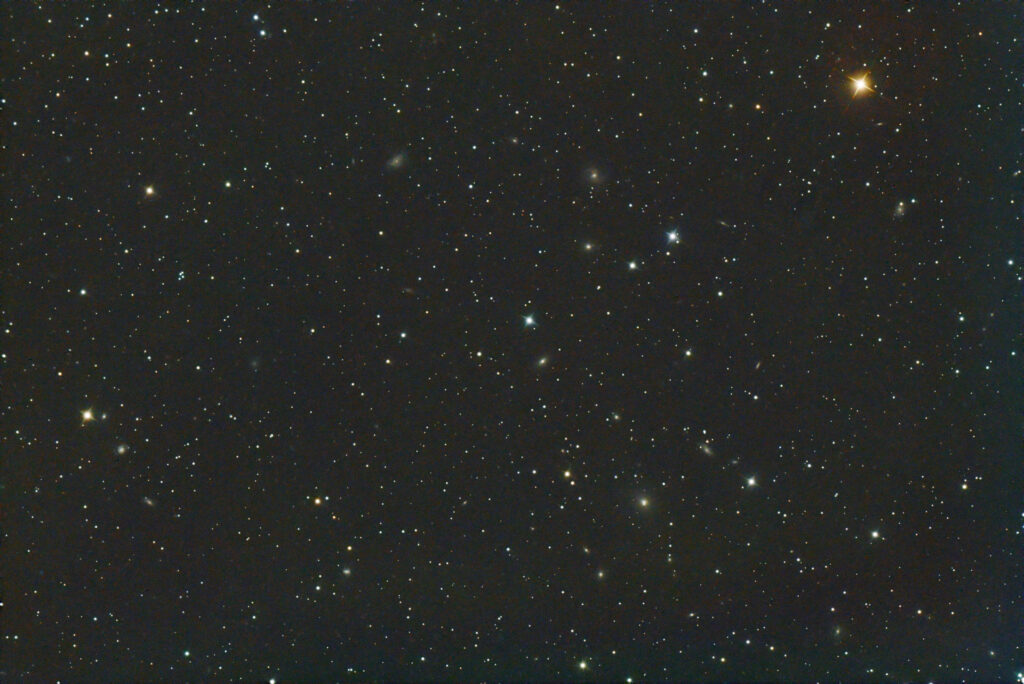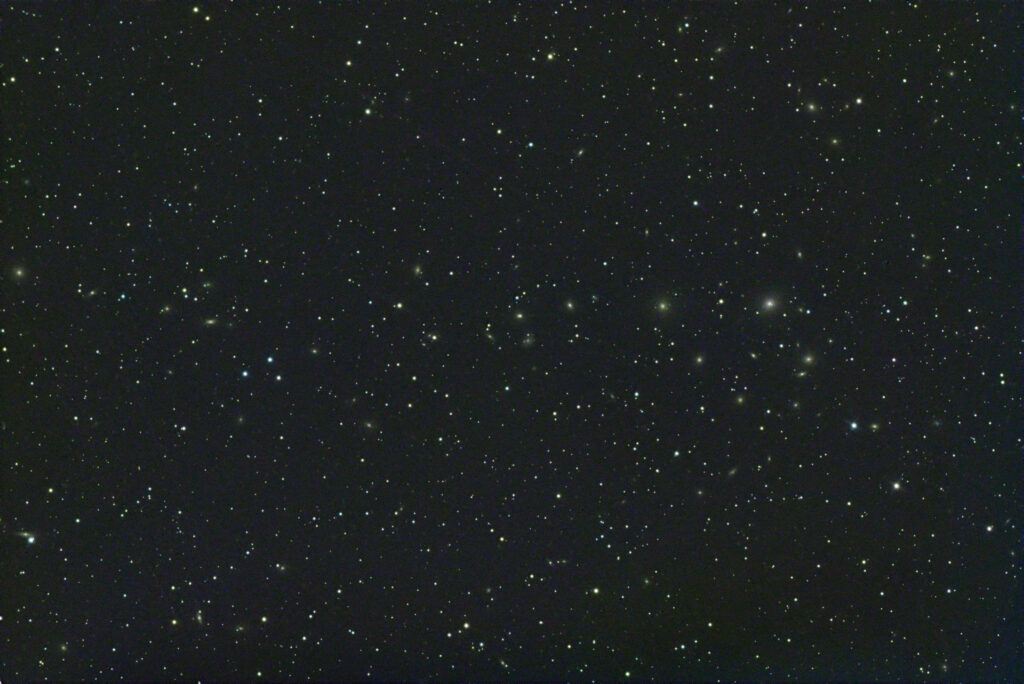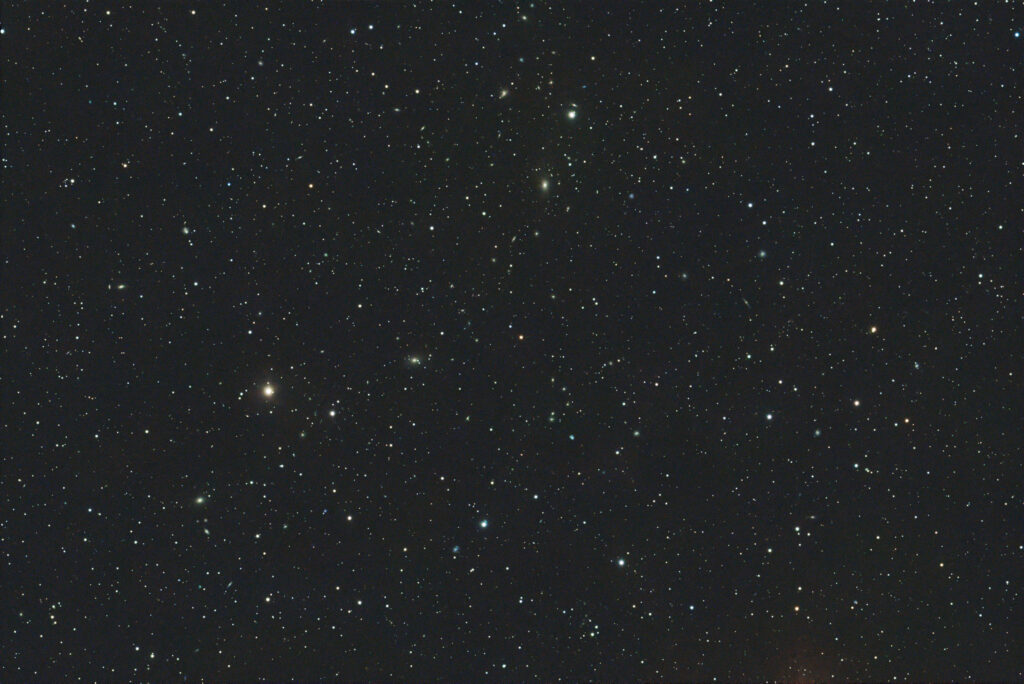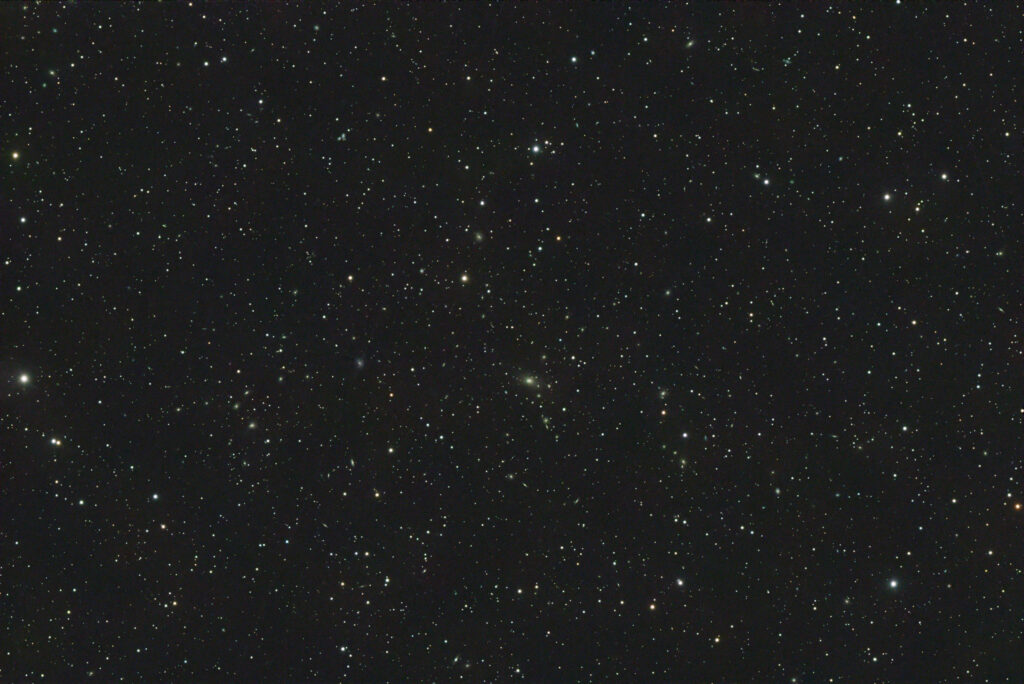
A galaxy cluster is a structure that consists of anywhere from hundreds to thousands of galaxies that are bound together by gravity, with typical masses ranging from 1014 to 1015 solar masses. Clusters consist of galaxies, heated gas, and dark matter. They are the biggest known gravitationally bound structures in the universe. Small aggregates of galaxies are referred to as galaxy groups rather than clusters of galaxies. Together, galaxy groups and clusters form superclusters.
Galaxies themselves only make up a small fraction (1%) of clusters, although they are the only component we can detect in the visible spectrum. The heated gas of the intracluster medium (ICM) has a peak temperature between 30 and 100 million degrees Celsius. Dark matter makes up the majority (90%) of the mass of galaxy clusters, but cannot be detected optically.
Galaxy clusters have been used to test predictions of general relativity: energy loss from light escaping a gravitational field. Photons emitted from the center of a galaxy cluster should lose more energy than photons coming from the edge of the cluster because gravity is stronger in the center. Galaxy clusters are also used for their strong gravitational potential as gravitational lenses to boost the reach of telescopes. The gravitational distortion of space-time occurs near massive galaxy clusters and bends the path of photons to create a cosmic magnifying glass.
